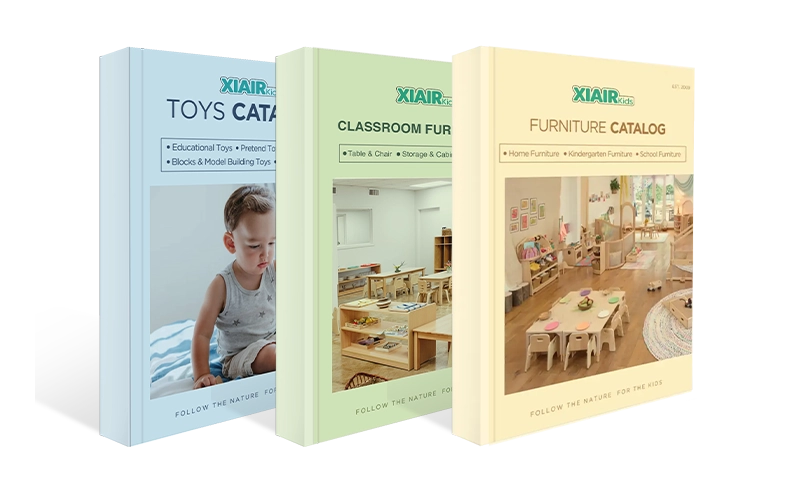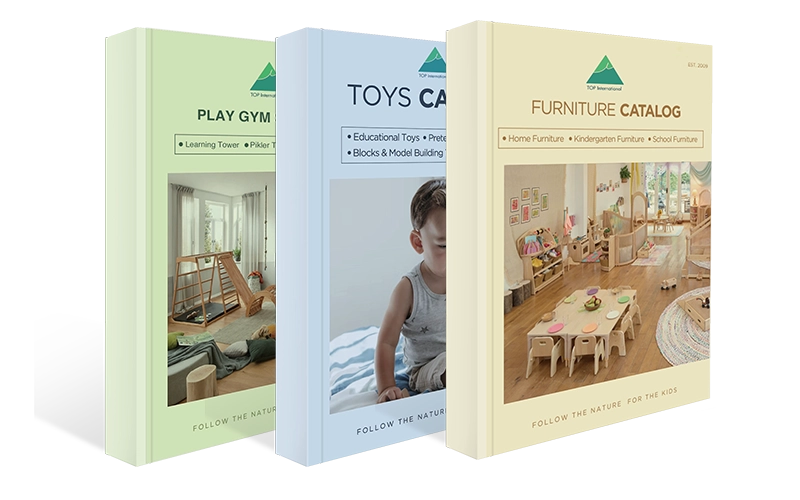Does your child struggle with a rigid school system prioritizing standardized testing over creativity? Are you worried that modern education focuses more on memorization than critical thinking and emotional intelligence? Have you heard of Waldorf Education but aren’t sure what makes it different from traditional schooling or other alternative approaches like Montessori?
Waldorf Education, Founded by Rudolf Steiner in the early 20th century, focuses on experiential learning, integrating arts, music, and movement into the curriculum. Instead of early academic pressure, students engage in age-appropriate education tailored to their developmental stages. This method fosters problem-solving skills, emotional intelligence, and a lifelong love for learning, making it a transformative choice for many families.
In this article, we’ll explore the core philosophy, curriculum structure, benefits, and challenges of Waldorf pedagogy. Whether you’re a parent seeking an alternative school for your child or an educator interested in new teaching methods, this guide will provide everything you need to understand how Waldorf schools create a nurturing, engaging learning environment.
The Foundations of Waldorf Education
Waldorf Education is a distinctive approach to learning that nurtures a child’s intellectual, emotional, and physical growth through a carefully designed curriculum. Unlike conventional education systems emphasizing standardized testing and early academic pressure, Waldorf schools prioritize experiential learning, artistic expression, and hands-on activities.
This holistic approach ensures students develop a deep love for learning, strong problem-solving skills, and emotional intelligence. The methodology is built on the belief that education should align with a child’s natural development, allowing them to explore the world in a way that fosters curiosity and independent thinking.
The Threefold Human Development Model
The foundation of Waldorf pedagogy is rooted in Rudolf Steiner’s threefold model of human development. This model divides childhood learning into three significant stages that align with a child’s natural development. These stages guide the curriculum and teaching methods, ensuring that children receive the right education at the right time and fostering academic and emotional growth.

Early Childhood (0–7 years)
In the early years, children learn best through play and imitation, mimicking the world around them. This stage focuses on developing motor skills, social interaction, and creativity. The emphasis is on fostering a sense of wonder and exploring the world through the senses, which sets the foundation for later learning.
Middle Childhood (7–14 years)
Children’s capacity for imagination and creative thinking flourishes as they enter middle childhood. This stage emphasizes storytelling, art, and movement to help children connect with the world of ideas. Math and history are taught through engaging narratives and hands-on projects, allowing children to connect emotionally with their learning.


Adolescence (14–21 years)
In adolescence, Waldorf Education encourages students to question, think critically, and begin to form their own beliefs and values. This stage focuses on intellectual independence, self-discovery, and applying knowledge in the real world. Students engage in more complex topics such as philosophy, advanced science, and literature and are encouraged to reflect on their lives and their world.
This carefully tailored approach ensures that each child receives a nurturing education that evolves with their developmental needs. By aligning learning experiences with the child’s natural growth patterns, Waldorf Education fosters academic success, emotional resilience, social understanding, and deep self-awareness. Each stage of development is thoughtfully supported, ensuring that children grow into well-rounded, confident individuals ready to navigate life’s challenges with creativity and critical thinking.
History and Origins of Waldorf Education
The Birth of Waldorf Education
Waldorf Education was founded by Rudolf Steiner in 1919 in Stuttgart, Germany. Steiner, an Austrian philosopher and social reformer, developed this education system based on his philosophy known as Anthroposophy—a belief in the integration of mind, body, and spirit in human development.
The first Waldorf school was established for employees’ children at the Waldorf-Astoria cigarette factory. The goal was to create an educational model that balanced intellectual growth with artistic and practical skills.
Global Expansion of Waldorf Schools
Since its inception, Waldorf Education has grown into a global movement, with over 1,200 Waldorf schools and 2,000 early childhood programs in more than 70 countries.
- North America: Waldorf schools are widely recognized
- institutions such as the Seattle Waldorf School and Maine Coast Waldorf School in the United States and Canada led the movement.
- Europe: The Steiner Waldorf Schools Fellowship supports a network of schools across the UK and mainland Europe.
- Asia & Australia: Countries like China, Japan, and Australia have seen a growing interest in Steiner education due to its emphasis on creativity and whole-child development.

Key Principles of Waldorf Education
1. Learning Through the Arts
In Waldorf schools, every subject is approached through art, music, drama, and storytelling, ensuring children learn in a multi-sensory environment. This method helps students retain information and better understand the material. Waldorf Education encourages critical thinking and problem-solving by connecting academic subjects to creative expression.
For example:
- Mathematics is not just learned through abstract numbers but is taught through music and rhythmic movement, allowing children to experience patterns and sequences in an embodied way.
- History comes alive through storytelling and dramatic reenactments, where children step into the shoes of historical figures and events, creating a personal connection to the past.
- Science is explored through hands-on experiments and nature observation, allowing students to engage directly with the natural world and fostering scientific inquiry and an appreciation for the environment.
2. Delayed Academics for Holistic Growth
One of the defining features of Waldorf Education is the delayed introduction of formal academics. While many traditional schools introduce reading and writing early (often as early as age 5), Waldorf schools wait until age 7 to formally teach these subjects. This delayed academic start is based on the belief that young children learn best through imaginative play, physical activity, and social interaction.
Postponing formal academics can help children develop essential fine motor skills, social cooperation, and creative problem-solving skills. This approach helps prevent academic burnout and allows children to enter formal learning with a strong emotional, cognitive, and social foundation.
3. Limited Use of Technology in Early Childhood
In the early years, Waldorf schools intentionally limit the use of technology in the classroom. This is based on the understanding that young children need real-world experiences to develop their creativity, social skills, and cognitive abilities. Instead of relying on digital devices, children engage with hands-on learning materials like wooden toys, art supplies, and nature-based resources.
In Waldorf Education, the focus is on developing imagination, physical coordination, and sensory awareness—skills that can be inhibited by early screen exposure. Technology is introduced gradually in the upper grades when children have a solid foundation in critical thinking and social-emotional development. This approach ensures that students are not overly reliant on technology but rather learn to engage with the world around them in meaningful ways.
4. Long-Term Teacher-Student Relationships
In Waldorf Education, teachers often remain with the same class for multiple years—sometimes as long as eight years. This continuity in the teacher-student relationship helps build a strong bond of trust, which is essential for deep learning. Long-term relationships deepen the teacher’s understanding of each child’s learning style, strengths, and growth areas.
By remaining with the same class, teachers can guide students through their developmental stages, adapting the curriculum to their needs and ensuring a nurturing and consistent learning environment. This connection also helps foster a sense of security and emotional stability, as students can build lasting, meaningful relationships with their teachers. The teacher becomes a trusted mentor, not just an instructor, guiding the students through their intellectual, emotional, and social growth.

Benefits of Waldorf Education
Waldorf Education offers a holistic learning approach beyond academics to nurture children’s intellectual, emotional, and social development. By focusing on creativity, critical thinking, and emotional intelligence, Waldorf schools provide an environment where students grow into well-rounded, independent thinkers. Let’s explore some of the key benefits of Waldorf Education.
1. Encourages Creativity & Imagination
Creativity and imagination are at the heart of Waldorf Education. In Waldorf schools, children engage with art, music, drama, and storytelling across subjects, fostering an environment where creative expression thrives. Hands-on projects encourage children to think outside the box, explore new ideas, and express themselves uniquely.
By blending creative learning with academics, Waldorf Education stimulates the imagination and helps children develop into innovative and resourceful thinkers prepared for future challenges.
2. Promotes Emotional & Social Development
One of the most significant advantages of Waldorf Education is its focus on emotional and social development. In Waldorf schools, children are given time and space to develop empathy, interpersonal skills, and a strong sense of community.
- Long-term teacher-student relationships allow for deep emotional connections. Teachers often stay with the same class for several years, fostering a secure learning environment where students can thrive emotionally.
- Social skills are developed through collaborative projects, group activities, and shared experiences. Students are encouraged to work together, resolve conflicts peacefully, and contribute to the well-being of the class.
This focus on emotional intelligence and social responsibility ensures that Waldorf students grow into empathetic, socially aware individuals who can work well in teams and contribute positively to society.

3. Fosters Independent Thinking
Waldorf Education prioritizes independent thinking over rote memorization and standardized testing. Waldorf schools do not rely on grades or standardized tests as a primary measure of success, which helps create an educational atmosphere that encourages self-expression and critical thinking.
- In Waldorf schools, students are encouraged to engage deeply with ideas and concepts, question assumptions, and develop their perspectives. This approach helps children develop problem-solving skills, as they can explore topics from multiple angles and reach conclusions.
- Inquiry-based learning and project-based education push students to take ownership of their learning. Self-directed projects enable students to research, experiment, and learn through exploration, cultivating self-motivation and a lifelong love of learning.
- By learning in an environment that encourages critical thinking and independent inquiry, students are prepared to tackle the complex challenges of the modern world and equipped with the skills needed for success in higher education and beyond.
This emphasis on autonomous learning fosters the growth of students who can think critically, independently, and confidently—skills that will serve them throughout their lives.
4. Supports a Love for Learning
One of Waldorf education’s most powerful benefits is its nurturing a lifelong love for learning. Instead of focusing on test scores and academic performance, Waldorf schools focus on developing curiosity and intrinsic motivation.
- The integrated curriculum in Waldorf schools ensures that students see the connections between subjects, which helps them understand how learning applies to the real world.
- Experiential learning allows students to engage with their education tangibly, making learning enjoyable and meaningful. When children can explore topics they are passionate about and discover the world around them, their natural curiosity is fostered, and they develop a deep love for learning.
- In Waldorf Education, the joy of learning is celebrated rather than the pressure of achievement. This fosters self-confidence and a positive attitude toward lifelong education.
By emphasizing holistic learning and creativity, Waldorf Education encourages students to view education not as a task or a competition but as a journey of discovery and personal growth.
5. Focus on the Arts and Practical Skills
A key aspect of Waldorf Education is its integration of the arts and practical skills into every subject. From handwork and visual arts to valuable skills like gardening, knitting, and woodworking, students are encouraged to develop their creative and practical skills.
- These activities help students build confidence in their abilities while promoting patience, focus, and fine motor skills.
- Practical life skills—such as cooking, cleaning, and gardening—are incorporated into the curriculum, allowing students to connect academic learning with real-world applications.
By providing a well-rounded education that includes intellectual growth and practical skills, Waldorf Education ensures that students are well-prepared for the challenges of the modern world and equipped with academic knowledge and sensible abilities.
Waldorf Education offers numerous benefits for students, from encouraging creativity and independent thinking to promoting emotional intelligence and a love for learning. Its holistic approach nurtures intellectual growth and supports social, emotional, and practical development, creating well-rounded individuals prepared to meet life’s challenges with confidence, creativity, and empathy.

The Curriculum Structure in Waldorf Schools
The curriculum structure in Waldorf schools is designed to support each child’s holistic development, integrating academic learning with artistic expression and hands-on activities. Rather than focusing solely on academics, Waldorf Education fosters creativity, emotional growth, and critical thinking. In the following sections, we’ll explore how subjects like language, mathematics, nature, and the arts are uniquely taught in Waldorf schools, helping students develop a deep understanding of the world around them and their potential.
Language, Literature, and History
In Waldorf Education, language, literature, and history are introduced and taught through a creative, imaginative approach that encourages deep engagement and understanding. Students in Waldorf schools develop their literary skills through a rich combination of storytelling, creative writing, and dramatization. The curriculum begins with oral storytelling in early childhood, followed by more formal literary instruction as students grow.
- Language Arts: Waldorf Education emphasizes expressive language skills, starting with storytelling, poetry, and drama. Students gradually progress to reading and writing but always in connection with artistic expression.
- History: History lessons are often taught through narrative storytelling. This method helps children build a strong emotional connection with the subject, allowing them to better understand and empathize with past events. Students explore historical events in chronological blocks, with each era or event introduced through an artistic form such as drama or visual art.
- Literature: As children develop, they explore classic works of literature and are encouraged to engage in discussions and reflections. Waldorf schools aim to nurture a lifelong love of literature by examining ancient and modern works, enabling students to appreciate the depth of storytelling and its significance.
By connecting language, literature, and history, Waldorf Education encourages children to develop strong communication and critical thinking skills, giving them the tools to express their ideas and understand the world around them.
Mathematics
Waldorf Education takes a unique approach to mathematics, emphasizing imagination, hands-on learning, and artistic expression. Mathematics in Waldorf schools is taught in blocks, with students studying one concept intensively for a few weeks before moving on to another area.
- Mathematical Concepts: Instead of beginning with abstract formulas and memorization, students in Waldorf schools are first introduced to mathematical concepts through stories, movement, and rhythm. For example, multiplication tables might be introduced through a musical rhythm, while geometry could involve drawing and creating shapes by hand.
- Practical Application: Mathematics is also taught through real-world examples, such as measuring, cooking, and other activities that require mathematical thinking.
- Creative Learning: By incorporating art and movement, Waldorf Education ensures that mathematics is not just about numbers but about developing a holistic understanding of how mathematical concepts relate to the world.
This approach to mathematics encourages students to develop a deeper, intuitive understanding of mathematical principles, which helps them retain knowledge meaningfully.
Nature and Science
In Waldorf Education, nature and science are introduced through hands-on experiences and direct interaction with the natural world. Students engage in experiments and nature walks and study the interconnectedness of all living things, developing an understanding of scientific principles and environmental stewardship.
- Exploration: Children in Waldorf schools are encouraged to explore the natural world through outdoor activities and gardening. From the early years, children spend time outside observing the seasonal changes, learning to identify plants and animals, and engaging in outdoor play.
- Scientific Concepts: In upper grades, students explore biology, chemistry, and physics through practical experiments and creative projects.
- Environmental Education: The curriculum also emphasizes sustainability, teaching students to respect and care for the earth and its resources.
This hands-on approach to science fosters curiosity, critical thinking, and a deep connection to the environment, providing students with the tools they need to navigate the scientific world.

Foreign Language Instruction
Waldorf Education strongly emphasizes foreign language instruction. Learning a second language is integrated into the curriculum starting in early childhood when children are introduced to languages through song, play, and immersion.
- Languages Taught: Many Waldorf schools offer German, French, or Spanish as their primary foreign languages, using the immersion method in the younger grades to make language learning natural and enjoyable.
- Spoken and Written Language: In Waldorf Education, language is first learned through oral skills, with reading and writing gradually introduced as the students grow older.
- Cultural Immersion: Besides language, students learn about the cultures associated with the languages they study, providing a rich, immersive experience.
By learning foreign languages early, Waldorf Education ensures that students become fluent speakers with a deep understanding of cultural context.
Visual Arts and Handwork
In Waldorf Education, visual arts and handwork are central to the curriculum. These subjects are not considered extracurricular activities but are woven into the daily learning experience.
- Handwork: Students use knitting, crocheting, and woodwork, which help develop fine motor skills, patience, and creativity.
- Visual Arts: Painting, drawing, and sculpture are incorporated into lessons across subjects, helping children express their understanding of different concepts.
- Creative Expression: The emphasis on art and handwork helps students develop problem-solving skills, encourages patience, and fosters self-expression.
This creative approach to learning encourages Waldorf students to think visually and artistically, helping them develop a well-rounded skill set.
Music and Performing Arts
Waldorf Education strongly emphasizes music and performing arts. Students learn to sing, play instruments, and participate in drama and dance throughout their school years.
- Music: Students learn to play instruments from a young age, beginning with the recorder and advancing to string instruments as they progress through the grades. Singing is also integral to the curriculum, helping students develop musical ear, rhythm, and harmony.
- Performing Arts: Drama and dance are also key components, with students acting in plays and learning movement skills through eurythmy, a unique movement-based art developed by Steiner.
- Cultural Exposure: In addition to music and drama, students explore world cultures through folk songs, dances, and traditional instruments.
Waldorf Education fosters creativity, emotional expression, and a strong sense of community through music and performing arts.
Eurythmy and Physical Education
Eurythmy is a unique art form developed by Rudolf Steiner and is an integral part of Waldorf Education. It combines movement, music, and speech to create a holistic expression of thought and feeling.
- Eurythmy: Students learn to express emotions and thoughts through movement, helping them develop coordination, balance, and inner awareness. It is often incorporated into other subjects like literature and history, where students perform eurythmic movements to help embody the lessons.
- Physical Education: Along with eurythmy, students also engage in traditional sports, such as soccer, basketball, and gymnastics, promoting physical health and teamwork.
Eurythmy and physical education help develop both physical coordination and emotional balance, supporting the well-rounded growth of the child.
Teacher-Student Relationships in Waldorf Education
Long-Term Teacher Commitment

One of the defining features of Waldorf Education is the long-term commitment of teachers to their students. Unlike traditional schools where students are assigned a new teacher each year, Waldorf teachers often stay with the same class for multiple years—sometimes from first through eighth grade. This continuity creates a unique educational environment where teachers can develop a deep understanding of each student’s needs, personality, and learning style.
This long-term teacher-student relationship builds trust and emotional security, allowing students to feel supported and safe in their learning journey. Teachers can closely observe and adapt to each student’s academic and emotional growth, ensuring that the teaching methods remain personalized and effective. As a result, students thrive in an atmosphere where they feel understood and valued.
The Role of the Waldorf Teacher
In Waldorf Education, the teacher is more than just an instructor; they are a mentor, guide, and role model. Teachers play a pivotal role in shaping students’ emotional, intellectual, and social growth. They are deeply invested in nurturing the whole child, not just their academic skills.
This personalized approach ensures every child feels understood, valued, and empowered to learn. Teachers in Waldorf Education are dedicated to creating a classroom atmosphere where curiosity is nurtured, and each child is encouraged to reach their full potential intellectually and emotionally.

Waldorf Education Pros and Cons
Advantages of Waldorf Education
✔ Encourages Creativity and Imagination – Learning through arts, storytelling, and music
✔ Supports Holistic Development – Focuses on emotional, social, and academic growth
✔ No Standardized Testing Stress – No grades or competitive ranking in early years
✔ Strong Teacher-Student Relationships – Consistent mentors for multiple years
✔ Balanced Curriculum – Integrates practical, artistic, and academic skills
Disadvantages of Waldorf Education
❌ Delayed Introduction to Academics – Formal reading and writing start later than in traditional schools
❌ Limited Use of Technology – Some parents worry about a lack of early exposure to digital tools
❌ Not Focused on Standardized Testing – May not align with conventional college entrance expectations
❌ Higher Tuition Costs – Most Waldorf schools are private and may not be financially accessible to all families
While Waldorf education is highly effective for fostering creativity and holistic growth, it may not be suitable for families that prefer rigid academic structures and early tech integration.
Waldorf vs. Other Education Models
Waldorf Education shares some similarities with other alternative educational methods like Montessori and Reggio Emilia, but each model takes a distinct approach to teaching and learning. This section will compare Waldorf Education with Montessori and Reggio Emilia, highlighting their key differences and similarities. Understanding these differences will help you determine which approach best fits your child’s learning style and educational needs.
Waldorf Education vs. Montessori
| Feature | Waldorf Education | Montessori Education |
|---|---|---|
| Curriculum Structure | Teacher-led, integrates arts and storytelling | Child-led, hands-on materials |
| Technology Use | Minimal in early years | Used for research and exploration |
| Academic Start Age | Delayed academics until age 7 | Early introduction to reading and math |
| Assessment | No grades or standardized tests | No grades, but progress is tracked individually |
Waldorf Education vs. Reggio Emilia
| Feature | Waldorf Education | Reggio Emilia |
|---|---|---|
| Learning Approach | Imagination-based, structured phases | Project-based, child-led learning |
| Use of Arts | Fully integrated into all subjects | Used as an exploratory tool |
| Classroom Environment | Warm, home-like setting with natural materials | Open-ended, studio-like spaces |
Waldorf Education stands apart from other educational models by emphasizing imagination-based learning, long-term teacher-student relationships, and an integrated approach to arts and academics. While similar to models like Montessori and Reggio Emilia in their focus on creativity and holistic development, Waldorf Education uniquely emphasizes nurturing the whole child, fostering emotional growth, and promoting critical thinking.
Choosing the right educational model depends on understanding your child’s learning style and needs. With its focus on personalized learning, Waldorf Education provides a supportive environment that prepares students to become independent thinkers and compassionate individuals who approach life with creativity and curiosity.
Is Waldorf Education Right for Your Child?
When considering Waldorf Education for your child, reflecting on their unique learning needs, personality, and educational goals is essential. Waldorf Education offers a distinctive approach, focusing on holistic development and creativity, but it may not suit every child or family. Below, we’ll explore the key factors that will help you determine whether Waldorf Education fits your child.
Consider Waldorf Education If:
- Your child thrives in a creative, hands-on learning environment.
Waldorf Education strongly emphasizes imaginative play, creative expression, and experiential learning. If your child excels in an environment where they can learn through art, music, and storytelling and where subjects are explored in a multi-sensory and interactive way, then Waldorf schools may be an ideal choice. - You prefer a holistic, developmentally appropriate curriculum.
Waldorf Education focuses on intellectually, emotionally, and socially nurturing the whole child. The curriculum is designed to align with the natural developmental stages of childhood, ensuring that learning is age-appropriate and supportive of emotional growth. Waldorf Education is well-suited to this philosophy if you value a non-pressuring approach that fosters creativity and self-discovery over early academic rigor. - You want a low-stress, non-competitive school environment.
In Waldorf schools, there is a strong emphasis on emotional well-being and a low-stress atmosphere. With a focus on collaboration rather than competition, students are encouraged to explore their interests without the anxiety of grades or standardized testing. If you seek an environment that allows your child to develop a love for learning without the pressure of academic performance, Waldorf Education provides just that.

It May Not Be the Best Fit If:
- You want early academics, rigorous testing, and traditional grading.
Waldorf Education delays formal academics until age 7, strongly emphasizing creativity and social development in the earlier years. If you are looking for a school that emphasizes early academic instruction and standardized testing from an early age, Waldorf Education may not align with your expectations. The curriculum is designed to cultivate a love for learning rather than pushing children into academic rigor too soon. - You prioritize early technology integration in education.
Waldorf schools limit the use of technology in early childhood, focusing instead on hands-on learning, real-world experiences, and physical play. If you are keen on introducing your child to technology early in their education, or if you want them to have constant access to digital tools for learning, Waldorf Education may not meet your needs, as it emphasizes face-to-face interactions and physical exploration.
Making the Decision:
Choosing your child’s educational path is highly personal, and there is no one-size-fits-all answer. When considering Waldorf Education, assessing your child’s personality, learning style, and long-term academic goals is essential. Waldorf Education may be the perfect fit if you seek a curriculum that nurtures creativity, fosters independence, and supports emotional growth in a low-stress environment. However, if you value early academics or heavy use of technology, other educational models may better suit your needs.
Ultimately, the right choice will help your child thrive, both in their academic pursuits and personal development. Take the time to explore all educational options and choose the one that aligns with your child’s needs and your family’s values.

Conclusion: The Future of Waldorf Education
As Waldorf Education continues to gain traction globally, its emphasis on holistic development, creativity, and emotional growth resonates with an increasing number of educators and parents seeking alternatives to traditional, test-driven models. Waldorf schools foster an environment where students are encouraged to explore subjects through imagination and hands-on learning, resulting in a deeper connection to their education.
The rise of Waldorf-inspired teaching methods and the growing availability of public Waldorf charter schools make this educational approach more accessible than ever. Research supporting the effectiveness of experiential learning and arts-based education continues to increase, highlighting the long-term benefits for students’ critical thinking and social development.
If you’re looking for an educational system that promotes creativity, independence, and a love for lifelong learning, Waldorf Education may be the perfect fit for your child. For schools and institutions that embrace this educational model, TOP Montessoris provides high-quality, affordable preschool furniture and resources that support hands-on, child-centered learning environments.








